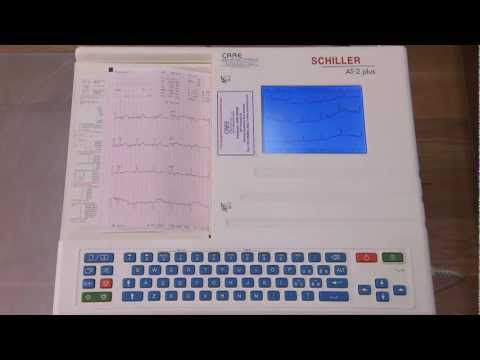The Medical Assistant’s Responsibilities
Contents
The medical assistant’s responsibilities include providing clinical and administrative support to the healthcare team. They may also be responsible for patient education and care.
Checkout this video:
Job Description
The medical assistant job description is both varied and concise. As a medical assistant you will be responsible for both clinical and administrative tasks in a medical office, hospital, or other medical facility. Your duties will depend on the size of the facility, the type of patients seen, and the specific duties assigned to you by your supervisor. However, there are some general responsibilities that are common to most Medical assistants
Clinical Responsibilities
As a medical assistant, you will be responsible for assisting the physician with patient care. This may include taking patient histories and vital signs, preparing patients for examination, assisting with office procedures, and giving patient instructions. You may also be responsible for collecting and preparing laboratory specimens or performing basic laboratory tests on site, scheduling appointments, and handling correspondence. In larger facilities, you may also be responsible for supervising the work of other clinical personnel such as Medical records clerks and receptionists.
Administrative Responsibilities
In addition to clinical responsibilities, you will also have a number of administrative duties. These may include greeting patients and answering phones, handling correspondence and billing, scheduling appointments, maintaining medical records ordering supplies, and handling insurance forms. As a medical assistant, you will be the link between the physician and the patient and will play a vital role in ensuring that the office runs smoothly.
Duties and Responsibilities
Medical assistants are multi-skilled health professionals specifically trained to work in outpatient facilities such as medical offices and clinics. Their duties vary greatly, depending on the size and location of their employer, but most perform administrative and clinical tasks. The following is a list of some of the duties commonly performed by medical assistants:
Clinical duties:
• Taking and recording patients’ vital signs, such as blood pressure, temperature, and pulse
• Collecting and preparing blood and other laboratory specimens
• Assisting with patient examinations
• Administering medications as directed by a physician
• Performing routine laboratory tests
• Instructing patients about medication schedules and special diets
• Arranging for hospital admissions and laboratory services
Adminstrative duties:
• Answering telephones
• Greeting patients
• Updating and filing patients’ medical records
• Scheduling appointments
• Arranging for hospital admissions and laboratory services
• Insurance billing
In addition to the above duties, some medical assistants also perform minor office surgeries, such as giving injections or removing sutures. They may also be responsible for handling medications and maintaining equipment.
Skills and Qualifications
Education and Qualifications
A medical assistant is a trained health professional who helps support the work of physicians and other health professionals by performing administrative and clinical tasks. A medical assistant may be responsible for tasks such as scheduling appointments, taking medical histories, recording vital signs, preparing patients for examinations, collecting laboratory specimens, performing basic laboratory tests,giving injections and assisting with minor office surgeries.
Most medical assistants have completed a postsecondary education program that lasts from one to two years. These programs are offered at many community colleges, technical colleges, vocational schools and universities. Some programs award a certificate upon completion, while others award an associate degree.
Education and Training
Education and Training: In order to become a medical assistant, you will need to complete an accredited medical assisting program. These programs are typically found at community colleges, technical schools, and some four-year universities. Most programs will take between one and two years to complete and will result in either a certificate or an associate’s degree. Upon completion of your program, you will then need to pass a certification exam in order to earn your credential. Some states also have licensure requirements for medical assistants.
Certification
The Medical Assistant’s responsibilities vary from state to state, but there are certain core duties that are common among all Medical Assistants. One of the most important responsibilities of a Medical Assistant is to maintain certification. In order to become certified, a Medical Assistant must successfully complete an accredited training program and pass a certification exam.
Medical Assistants who are certified have demonstrated their knowledge of medical assisting and their commitment to providing quality patient care. Certification provides patients with the assurance that they are receiving care from qualified professionals. In addition, many employers prefer to hire certified Medical Assistants.
Becoming certified is not required in all states, but it is highly recommended. Certification demonstrates your commitment to your career and sends a message to employers that you are serious about providing quality patient care.
Salary and Job Outlook
The salary for a medical assistant can vary based on experience, geographic location, and the type of facility where they work. According to the Bureau of Labor Statistics, the median annual salary for a medical assistant was $34,800 in May 2019. The job outlook for medical assistants is expected to grow much faster than average, with an anticipated 23% growth in employment opportunities between 2019 and 2029.
Medical assistants have a variety of responsibilities, which may include taking patient medical histories and vital signs, scheduling appointments, preparing patients for examinations, assisting physicians with procedures, providing instruction to patients on medications and treatments, organizing laboratory services, and handling billing and insurance paperwork. Most medical assistants work in doctor’s offices or clinics. Some may also work in hospitals or other healthcare facilities.
Working Conditions
Most medical assistants work in physicians’ offices, hospitals, or clinics. Their duties vary with the location, specialty, and size of the practice.
Most medical assistants work full time. Some work evenings or weekends to cover shifts in doctor’s offices or clinics that are open at those times. Many medical assistants have flexible schedules and may be able to take time off during the week.
Career Paths
There are several different types of medical assistants, each with their own set of responsibilites. The most common type of medical assistant is the clinical medical assistant, who performs both clinical and administrative duties. Other types of medical assistants include optometric assistants, ophthalmic medical assistants, podiatric medical assistants, and surgical medical assistants.
Clinical duties performed by medical assistants include taking and recording patient vital signs, such as blood pressure and weight; performing basic laboratory tests; collecting and preparing patient specimens for laboratory testing; administering injections; applying dressings; and assisting with minor surgical procedures. Administrative duties performed by medical assistants include scheduling appointments, maintaining patient records, handling correspondence, billing patients, coding insurance forms, and ordering supplies.
Medical assistants who specialize in optometry perform duties such as measuring patients’ glasses prescription strength; testing patients’ depth perception, color vision, and ability to focus; and measuring the pressure inside the eye (intraocular pressure). Ophthalmic medical assistants assist ophthalmologists in performing diagnostic tests such as visual acuity tests; measuring intraocular pressure; testing for glaucoma; and funduscopic examinations. Podiatric medical assistants assist podiatrists in the treatment of foot disorders. Surgical medical assistants assist surgeons during operations.
9.FAQs
The medical assistant’s responsibilities include performing administrative and clinical tasks to support the work of physicians and other health care professionals. Medical assistants typically work in outpatient care centers, hospitals, and physician offices. They may also work in specialized clinics, such as those that focus on sports medicine or child care.
Some of the administrative tasks that medical assistants may perform include answering phones, scheduling appointments, and coding and billing insurance forms. They may also be responsible for maintaining Medical records ordering supplies, and handling correspondence. Medical assistants may also be responsible for preparing patients for examinations and taking their vital signs.
Clinical tasks that medical assistants may perform include collecting lab specimens, performing basic laboratory tests, administering injections, and removing sutures. They may also assist with minor surgical procedures, such as wound care or casting broken bones.
Get Started as a Medical Assistant
Medical Assistants are in high demand! A Medical Assistant is a member of the healthcare team that assists with patient care, administrative tasks and clerical work in a medical office or clinic setting.
A Medical Assistant may perform many different types of tasks in a given day. Tasks can range from greeting patients and answering phones to scheduling appointments and handling insurance paperwork. In some states, a Medical Assistant may also be able to take patient medical histories, assist with minor procedures and give injections under the supervision of a physician.
If you have excellent people skills, are detail oriented and enjoy working in a fast-paced environment, then being a Medical Assistant may be the right career for you!







